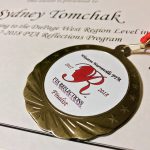External Link: Can Autism be Cured? – Dr. Mark Hyman
Many people think that receiving a diagnosis of Autism Spectrum Disorder is a label you wear for the rest of your life.
We don’t believe that.
This post goes into some of the details that points to the rise in Autism diagnosis being more of an immune disorder, not a brain disorder. Every decision, every treatment and every dietary decision we make for Max is based around this idea. While he is not recovered yet, we have seen great improvements over the last 2-3 years and he continues to improve and inspire us daily.
The original post can be found here. A copy of it is also below.
TODAY MOST PEOPLE BELIEVE that Autism is a genetic brain disorder. I’m here to tell you that this isn’t true. The real reason we are seeing increasing rates of autism is simply this: Autism is a systemic body disorder that affects the brain. A toxic environment triggers certain genes in people susceptible to this condition. And research supports this position.
Think about it. Rates of autism have skyrocketed over the years, from an estimated 1 child in 3,000 to just 1 in 150 kids today. Sure, wider criteria for diagnosis and better detection might explain some of it but not an increase of this magnitude.
Dramatic scientific discoveries have taken place during the last 10 to 20 years that reveal the true causes of autism, and turn conventional thinking on its head. For example, Martha Herbert, MD, a pediatric neurologist from Harvard Medical School has painted a picture of autism that shows how core abnormalities in body systems like immunity, gut function, and detoxification play a central role in causing the behavioral and mood symptoms of autism.
Recently I treated a 2 ½ year old boy named Sam. He was born healthy but diagnosed with autism after his vaccination for measles, mumps and rubella at 22 months.
Every child with autism has unique genetics, causes or triggers. And it is not usually one thing but a collection of insults, toxins and deficiencies piled on susceptible genetics that leads to biochemical train wrecks we see in these children.
When I first saw him, this little boy was deep in the inner wordless world of autism. Watching him was like watching someone on a psychedelic drug trip. So we dug into his biochemistry and genetics and found many things to account for the problems he was having.
He had very high level of antibodies to gluten. He was allergic not only to wheat, but to dairy, eggs, yeast, and soy — about 28 foods in total. He also had a leaky gut, and his gut was very inflamed. Sam was deficient in zinc, magnesium, and manganese, vitamins A, B12, and D, and omega-3 fats. Like many children with autism, he had trouble making energy in his cells, or mitochondria.
His amino acids — necessary for normal brain function and detoxification — were depleted. And his blood showed high levels of aluminum and lead, while his hair showed very high levels of antimony and arsenic, signs of a very toxic little boy. His levels of sulfur and glutathione were low, indicating that he just couldn’t muster the power to detox all these metals. In fact, his genes showed a major weak spot in glutathione metabolism, which is the body’s main antioxidant and major detoxification highway for getting rid of metals and pesticides.
Sam also had trouble with a key biochemical function called methylation that is required to make normal neurotransmitters and brain chemicals and is critical for helping the body get rid of toxins. This showed up as low levels of homocysteine (signs of problems with folate metabolism) and high methylmalonic acid (signs of problems with B12 metabolism). He also had two genes that set him up for more problems with this system.
Finally, he also had very high levels of oxidative stress or free radical activity, including markers that told me that his brain was inflamed and under free-radical fire.
This may all seem complicated, but it really isn’t. When I see any patient, I simply work through the 7 Keys to UltraWellness (based on functional medicine) to see how everything is connected, create a plan to get to the causes of the problems, and then help each patient deal with all the biochemical and physiological rubble that those causes have left along the road.
To create a roadmap for recovery you just take away what’s bothering the patient and give his body what it is missing and needs to thrive (based on the individual’s biochemical uniqueness). Then the body does the rest. Here is the roadmap I used to help Sam recover.
Step 1: Fix His Gut and Cool the Inflammation There
This step included a number of different tactics including:
- Taking away gluten and other food allergens
- Getting rid of his yeast with anti-fungals
- Killing off the toxic bacteria in his small intestine with special antibiotics
- Replenishing healthy bacteria with probiotics
- Helping him digest his food with enzymes
Step 2: Replace the Missing Nutrients to Help His Genes Work Better
In Sam’s case we:
- Added back zinc, magnesium, folate, and vitamins A, B6, B12, and D
- Supported his brain with omega-3 fats
Step 3: Detoxify and Reduce Oxidative Stress
- Once his biochemistry and nutrition was tuned up, we helped him detoxify and reduce oxidative stress.
- Improve nutrition, reduce inflammation, heal the gut, detoxify — this should sound familiar.
As I said before, the keys of UltraWellness can help, no matter what the disease or condition. Biology has basic laws, which we have to follow and understand. All the details of Sam’s story fit into these laws. We just have to dig deep, peel back the layers, and understand what is going on. When we do this the results are nothing short of miraculous…
After following a gluten-free diet and treating his gut for 3 weeks, Sam showed dramatic and remarkable improvement. He was getting back much of his language skills and showing much more connection and relatedness in his interactions.
After 4 months, he was more focused, unstuck and verbal.
After 10 months, his bowels were back to normal, he was verbally fluent, mainstreamed in school and he “lost” his diagnosis of autism.
After 2 years all his abnormal tests were normal including the high metals, gut inflammation and damage to his mitochondria and free radicals.
And more importantly, the child was totally normal. Not every child has such a dramatic recovery but many improve, and some improve dramatically using the approach of functional or systems medicine.
This is just the beginning. Read the full article on Why Current Thinking About Autism Is Completely Wrong.
To your good health,
Mark Hyman, MD






You must be logged in to post a comment.